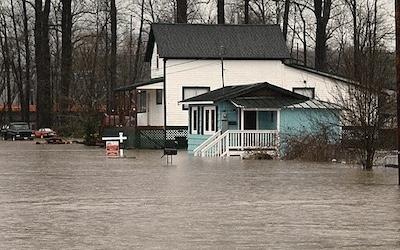What Drives Uncertainty Surrounding Riverine Flood Risks?
Flood risks are driven by interacting factors including hazards, exposure, and vulnerability. These factors and their interactions are often deeply uncertain. As a result, sizeable uncertainties surround flood risk projections. The study first samples key uncertainties impacting estimates of hazard, exposure, as well as vulnerability. The study then propagates these factors to sample the uncertainty about risk estimates. A third step performs a global sensitivity analysis to quantify the relative contributions of the input uncertainties to the uncertainties surrounding the resulting flood risk estimates.
We find that uncertainties about the flood hazards are the most important factor determining the uncertainty about flood risks. This insight is important to inform the design of studies to reduce future uncertainties about flood risks. Our findings suggest that reducing the uncertainties surrounding estimates of flood hazards (as opposed to factors influencing estimates of exposure and vulnerability) is a promising step.
Designing strategies to manage flood risks is complicated by the often large uncertainties surrounding flood risk projections. Uncertainty surrounding riverine flood risks can stem from choices regarding boundary and initial conditions, model structures, and parameters as well as interactions among hazards, exposures, and vulnerabilities. Here we analyze a case study to rank the drivers of uncertainties surrounding riverine flood hazards and risks. Using Sobol’ sensitivity analysis with a large number of simulations, we thoroughly explore the interactions among different sources of uncertainty. We find that the projected flood risk is most sensitive to factors associated with flood hazards, rather than exposure and vulnerability: upstream discharge, river bed elevation, channel roughness, and the digital elevation model resolution. Our results highlight the importance of uncertainty quantification in enhancing the reliability of flood models and risk assessments.

